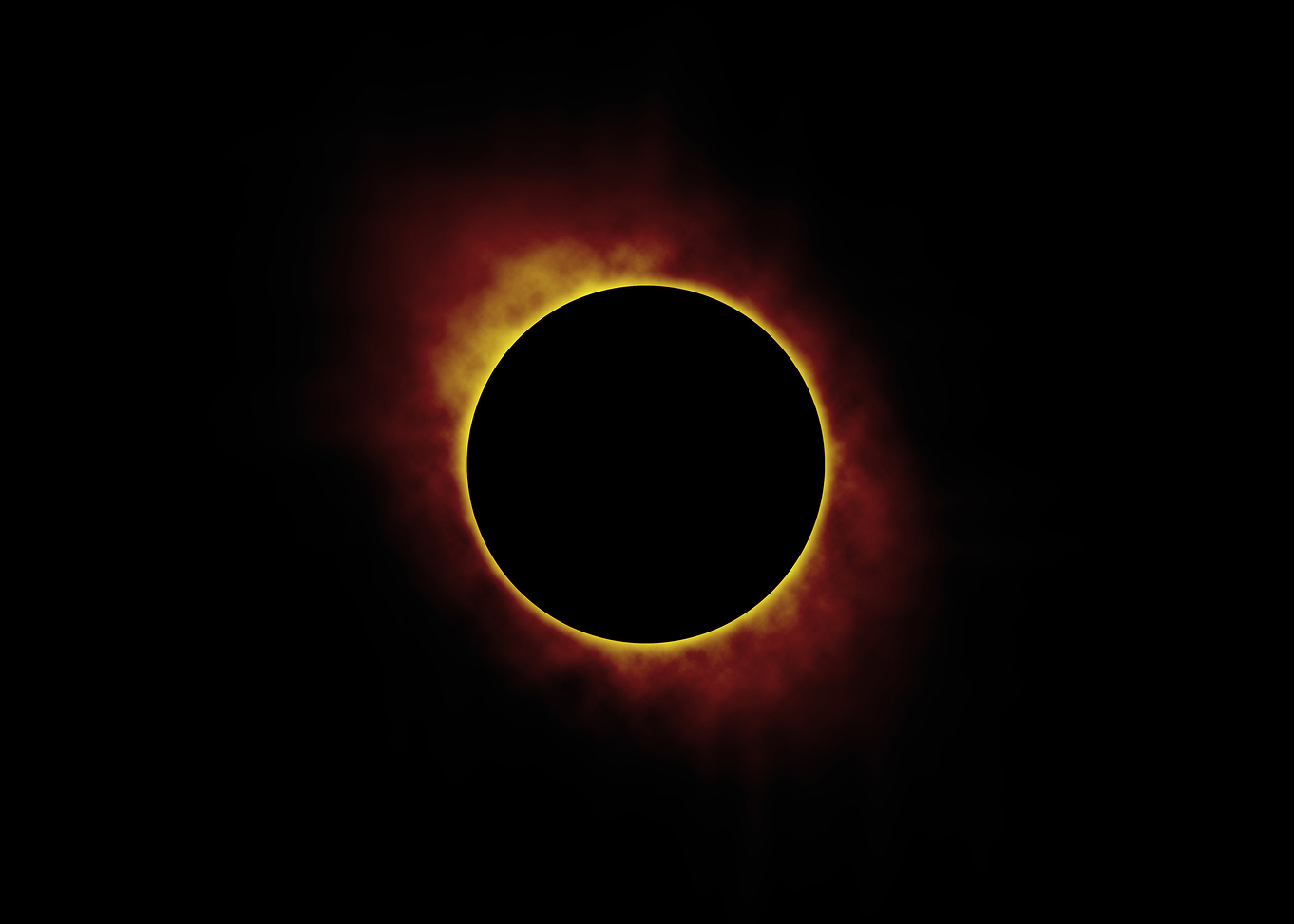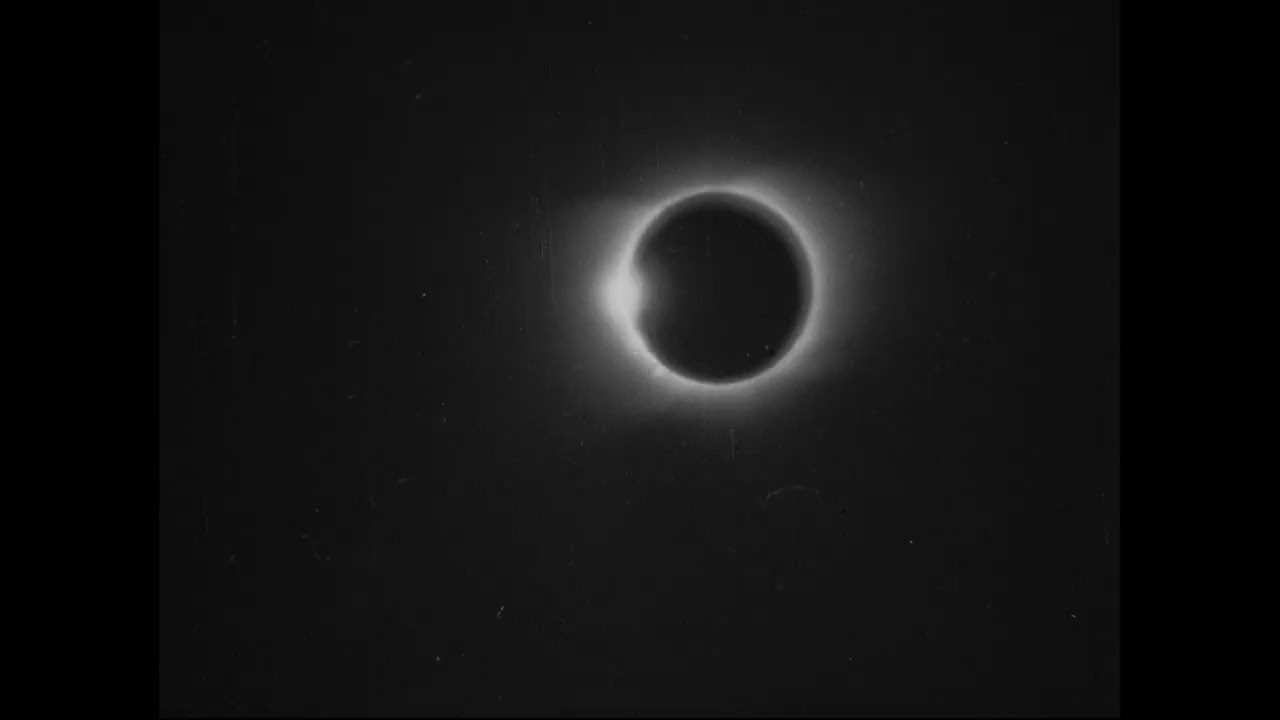A solar eclipse is one of the most amazing natural phenomena that you can witness. It is also one of the fastest moving events that you can observe. The speed of a solar eclipse is determined by the relative motions of the Sun, Moon, and Earth.
The Moon orbits around the Earth at a speed of about 2,288 mph (3,682 km/h). The Earth orbits around the Sun at a speed of about 67,000 mph (108,000 km/h). When the Moon moves between the Sun and the Earth, it casts a shadow on the Earth.
The speed of the eclipse is determined by the relative motion of the Sun, Moon, and Earth.
If the Sun, Moon, and Earth were all in a straight line, then the eclipse would move across the Earth at a speed of about 2,288 + 67,000 = 69,288 mph (3,682 + 108,000 = 111,682 km/h). However, the Sun, Moon, and Earth are not usually in a straight line.
The Moon’s orbit is tilted with respect to the Earth’s orbit around the Sun. This means that the eclipse moves across the Earth at a speed that is less than 69,288 mph (111,682 km/h).
The speed of the eclipse also depends on the distance between the Sun, Moon, and Earth.
When the Moon is closer to the Earth, the eclipse moves faster. When the Moon is farther from the Earth, the eclipse moves slower.
The speed of the eclipse also depends on the size of the Moon.
When the Moon is closer to the Earth, it appears to be larger in the sky. This makes the eclipse appear to move slower. When the Moon is farther from the Earth, it appears to be smaller in the sky.
This makes the eclipse appear to move faster.
Solar Eclipse 101 | National Geographic
When the moon passes in front of the sun during a solar eclipse, it blocks out the sun’s light. The moon moves about 400 times faster than the sun, so the eclipse appears to move across the sky quickly.
What is an Eclipse
An eclipse is a celestial event in which the moon passes between the sun and the earth, causing the sun to be obscured from view. A total eclipse occurs when the moon completely covers the sun, while a partial eclipse occurs when only a portion of the sun is covered. Eclipses can occur only during certain phases of the moon’s orbit around the earth, and they are often visible only from specific locations on the earth’s surface.
What is a Solar Eclipse
A solar eclipse is when the moon passes in front of the sun, blocking its light. Solar eclipses can only happen during a new moon, when the sun and moon are in alignment. There are three types of solar eclipses: total, partial, and annular.
A total eclipse is when the sun is completely blocked by the moon, while a partial eclipse is when the sun is only partially blocked. An annular eclipse is when the moon is too far away from the earth to completely block the sun, resulting in a “ring of fire” around the moon.
Solar eclipses are a fascinating phenomenon that have been observed and studied for centuries.
They are also a popular tourist destination, as people travel from all over the world to see a total eclipse. If you’re lucky enough to witness a solar eclipse, it’s a truly amazing experience that you’ll never forget!
Lunar Eclipse Questions And Answers
A lunar eclipse can be a bit of a mystery- after all, the moon doesn’t usually turn red! Here are some questions and answers about lunar eclipses to help you understand them a bit better.
What is a lunar eclipse?
A lunar eclipse occurs when the moon passes into the Earth’s shadow. This can happen only when the sun, Earth, and moon are aligned, with the Earth in between the sun and the moon.
What causes the moon to turn red during a lunar eclipse?
During a lunar eclipse, the moon is not actually turning red. The red color is caused by the Earth’s atmosphere. The atmosphere bends and filters the sunlight, and the red light is the only color that is not completely absorbed.
This is the same reason that the sun looks red during a sunset.
Why don’t we have a lunar eclipse every month?
The moon’s orbit around the Earth is tilted, so usually the moon passes above or below the Earth’s shadow.
We can only have a lunar eclipse when the moon is directly in line with the Earth’s shadow.
Is it safe to look at a lunar eclipse?
Yes, it is safe to look at a lunar eclipse with the naked eye.
You do not need any special equipment to view the eclipse.
When is the next lunar eclipse?
The next lunar eclipse will occur on January 31, 2018.
Whens the Next Solar Eclipse
On August 21, 2017, a total solar eclipse will be visible in North America. This eclipse will be the first total solar eclipse visible in the contiguous United States since the eclipse of June 8, 1918.
What is a total solar eclipse?
A total solar eclipse occurs when the moon completely covers the sun, blocking out all sunlight. The moon and sun line up perfectly, and the moon casts a shadow on Earth. Totality is when the sun is completely covered by the moon.
During a total solar eclipse, the sky darkens and the temperature can drop. Stars may become visible and birds may stop singing. The total eclipse will last for a few minutes, while the partial eclipse will last for several hours.
When is the next solar eclipse?
The next total solar eclipse will be visible in North America on August 21, 2017.
How can I see the eclipse?
If you want to see the eclipse, you need to be in the path of totality. The path of totality is a narrow strip of land where the sun will be completely covered by the moon. To find out if you live in the path of totality, check out this map.
If you can’t make it to the path of totality, you can still see a partial eclipse. A partial eclipse is when the moon covers part of the sun. Everyone in North America will be able to see a partial eclipse.
How can I safely watch the eclipse?
You should never look directly at the sun, even during an eclipse. It can damage your eyes. There are special eclipse glasses that you can wear to safely watch the eclipse. You can also make a pinhole projector to watch the eclipse.
What are some fun eclipse facts?
-A solar eclipse can only happen during a new moon.
-The moon is about 400 times smaller than the sun, but it is also 400 times closer to Earth. This is why the moon can block out the sun.
-Solar eclipses happen about every 18 months.
-The last total solar eclipse visible in the contiguous United States was on June 8, 1918.
-The next total solar eclipse visible in the United States will be on April 8, 2024.
Why Does a Lunar Eclipse Only Last a Few Hours
A lunar eclipse only lasts for a few hours because the moon is moving out of the Earth’s shadow. The moon is in the Earth’s shadow for about an hour, but the total eclipse lasts only for a few minutes. This is because the moon is moving away from the Earth’s shadow.

Credit: preventblindness.org
Does a Solar Eclipse Move?
A solar eclipse occurs when the moon passes in front of the sun, creating a shadow on Earth. The moon does move, but it is orbiting Earth at the same time. This causes the shadow to move across the planet.
How Does an Eclipse Move?
When the moon orbits around the Earth, sometimes it will line up perfectly with the sun. When this happens, the moon blocks the sun and casts a shadow on the Earth. This is called an eclipse.
There are two types of eclipses: solar eclipses and lunar eclipses. A solar eclipse happens when the moon lines up between the Earth and the sun. This blocks the sunlight from reaching the Earth and casts a shadow on the planet.
A lunar eclipse happens when the Earth lines up between the sun and the moon. This blocks the sunlight from reaching the moon and casts a shadow on it.
Eclipses can only happen during certain times of the year.
This is because the Earth, moon, and sun have to be in the correct alignment. Solar eclipses usually happen about once every 18 months. Lunar eclipses happen about twice a year.
The shadow of the moon during a solar eclipse is cone-shaped. The point of the cone is called the umbra. The umbra is the darkest part of the shadow.
The moon’s shadow also has a penumbra. The penumbra is the lighter part of the shadow.
During a solar eclipse, the umbra will touch down on the Earth in a small area.
This area will experience totality, which is when the sun is completely blocked by the moon. Totality can last for up to about three minutes. Outside of the area of totality, the moon will only block part of the sun. This is called a partial eclipse.
During a lunar eclipse, the umbra will touch the moon. The moon will slowly move through the umbra. The whole moon will turn a reddish color. This is because some of the sunlight is still reaching the moon, but it is being filtered through the Earth’s atmosphere.
Eclipses are amazing to see. If you want to see an eclipse, make sure to check out when the next one will be in your area!
How Fast Can a Solar Eclipse Blind You?
A solar eclipse can blind you if you stare at it for too long. The sun’s rays are so intense that they can damage your eyesight if you’re not careful. Even looking at the sun for just a few seconds can cause permanent damage to your eyes.
That’s why it’s so important to wear proper eye protection when watching a solar eclipse.
What Moves During a Solar Eclipse?
A solar eclipse occurs when the Moon passes in front of the Sun, blocking its light. The Moon is in orbit around the Earth, and as it moves, it sometimes lines up perfectly with the Sun. When this happens, we see a solar eclipse.
During a solar eclipse, the Moon casts a shadow on the Earth. The shadow is divided into two parts: the umbra and the penumbra. The umbra is the inner part of the shadow, where the Sun is completely blocked by the Moon.
The penumbra is the outer part of the shadow, where the Sun is only partially blocked.
If you’re in the umbra, you’ll see the Sun completely covered by the Moon. If you’re in the penumbra, you’ll see a partial eclipse.
The Moon moves around the Earth at a speed of about 2,300 miles per hour. But the shadow of the Moon moves across the Earth at a much slower speed, only about 1,000 miles per hour. So if you’re in the path of the umbra, you’ll see the Moon slowly move across the Sun.
During a solar eclipse, the Moon doesn’t just block the Sun, it also reflects some of the Sun’s light. This sunlight is bent, or refracted, by the Moon’s atmosphere and cast onto the Earth. This is what causes the Sun to appear to have a ring of light around it during a total eclipse.
Conclusion
According to the blog post, the solar eclipse moves quite fast. It can move at up to 2,000 miles per hour, which is faster than a speeding bullet. The eclipse also changes direction as it moves across the sky.
This makes it hard to predict its exact path.
